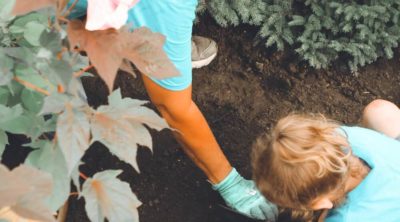
Reading, writing, and arithmetic are obviously important areas of education for children. But even more important is involving them in activities that will educate them and help them understand their place in the world, and how they can make the global community a better place.
By Lana Christian
What scene do you face each day from dinnertime to bedtime? If you have kids, you’ll likely face at least a few of these: “I’m starving!” “That’s mine!” “I wanna …” “Gimme!” “Mooommmmm!” “He took ..” “She hit …” “Dad said …” “Can you?”
No magic potion will keep kids from being kids, but you can do something about the “I-me-mine” syndrome. Give your kids a worldview.
We live in a global community. Thinking that way helps us look beyond ourselves. How do you instill that into children, in an age-appropriate way? You can start by asking your children what they think children are like in other countries. What do they play with? What are they scared of? What do they need the most? What are their families like? When do children start working in other countries? That can open the door to creating a worldview for your child. Learning what everyone has in common helps the world be seen as smaller and more ‘accessible’.
But we also have important differences. The most glaring one is material possessions. We live in such a land of plenty that we too quickly forget others do not. A quick trip to a few websites such as UNICEF or World Vision will give you plenty to talk about.
Raising awareness of what children around the world do and don’t have can keep your children from ‘ingrown vision’. Instead, they can learn to appreciate what they have and what they can share as they learn about children in other countries. This can parallel or augment a school social studies project, or provide an open door for school involvement as a result of a child’s interest in making a difference.
Children in third world countries contract live-threatening illnesses every day, simply for lack of clean water to bathe in. These are diseases that industrialized countries ‘conquered’ decades ago. To drive that point home, talk about your child’s experience when he or she was ill. Maybe it even required a hospital stay. It was scary, but people and medicine fixed everything. Ask, “What would happen if you couldn’t go to the hospital or get medicine?” That opens the door for talking about how $20 can buy medicine kits for families in developing countries.
Animals are the lifeblood of people in many countries. International organizations can provide families with animals if you donate the money. For example, you can buy two chickens for $50. They’ll provide food for a family, and their offspring can be sold at market. Ask your children how they could raise money for a ‘chicken fund’.
You can blend global ecology and respect for the environment into the lesson, too. An alpaca is a sure-footed, sturdy pack animal whose soft wool is highly prized around the world. Alpacas graze in a way that doesn’t uproot ground cover, which helps the environment. For $175, you can buy an alpaca that will help sustain a family financially. Similarly, you can talk about growing sustainable trees as a source of income.
Older children can delve into complex human rights issues―why young girls are sold to be temple prostitutes in Asia, or why preteen boys are forced into conscription to fight civil wars in Africa. Teenagers would be surprised to learn that slave trade is still common in parts of Africa and Asia.
Your family as a whole can decide to contribute to the cost of digging a well or providing seeds and garden tools for families to start their own farm. The possibilities are endless. In the process, your child might want to start corresponding with a pen pal overseas. Or, you may decide to sponsor a child financially. Monthly support for food and schooling costs less than your cable bill.
Whatever avenue you choose, instilling a worldview in children can give them a broader perspective and a grateful attitude. It just might turn some of those ‘Gimme’s’ into ‘Here, share mine’.


